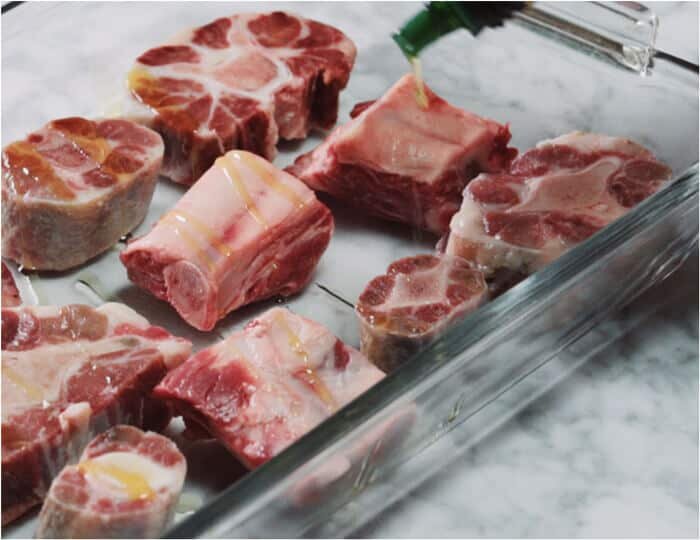Bone Broth
Whether you remember it from your childhood, or are seeing it for the first time in a packet, bone broth has come back in fashion. So, what is all the fuss about? Our Dietitian Katrina Shepherd takes a closer look.
The history of bone broth is as deep and rich as its savoury taste. The concept of simmering animal bones in water dates back to hunter-gatherer times when fire was discovered, food was scarce and no part of an animal was spared. These days we aren’t boiling bones for survival, but the concept of wanting to stretch out a meal remains. We live in a throw-away culture where New Zealanders chuck out the equivalent of 271 jumbo jets of food waste each year (worth $1.17 billion). We’d like to think the resurgence of bone broth is because consumers want to reduce food waste and use the nose-to-tail approach, where all odds and ends of the animal are used – however it may in reality, be good old fashioned vanity that is behind the revival.
Bones by themselves are often too tough to chew, but when you cook them for long periods in water they soften and release their nutrients, creating a nourishing and hearty liquid. This can be used as a base stock for a soup or casserole or simply enjoyed by itself. Bone broth has been praised for its proposed medicinal purposes, with claims that the collagen, protein, calcium, magnesium and gelatine (from the bones and sinew) can help improve gut health, digestion, immunity, joint pain and skin texture. There is no denying these nutrients alone have been linked with supporting health (e.g. collagen has been shown to optimise skin texture), however there isn’t a wealth of evidence that shows bone broth alone is solely responsible for these claims. This could be because we don’t eat foods in isolation, we eat food as part of a varied diet and having a nutritious, balanced diet means your health (relating to nutrition) is being taken care of. The bottom line is bone broth is nutritious and can offer a source of important nutrients, but is it the miracle super-food that is going to cure all aliments and give you beautiful skin, hair and nails? The scientific jury is still out on that one…
The supposed health benefits of bone broth got quite out of hand back in 2015. Controversy arose in Australia when celebrity chef Pete Evans endorsed bone broth for infants, less than 6 months of age, in his paleo cookbook for infants and toddlers. Thankfully the Dietitians Association of Australia advocated strongly with other health organisations and stopped the book going to print. It should be noted that bone broth is not recommended for infants under 6 months old. The media attention around this case, was a good lesson for the consumer to seek nutritional advice from qualified Registered Nutritionists and Dietitians rather than celebrities.
Many people grew up on bone broth but the younger generation may be seeing it for the first time in the powdered, packaged form on social media or in health stores. Powdered, packaged bone broths generally contain beef bone extracts, thickeners, preservatives, seasoning and sometimes vegetables. Some brands are better than others in terms of their ingredients list but on the whole, the salt (sodium) in powdered, packaged bone broth is very high. To put it in perspective a high salt food is considered to be more than 600mg per 100g and some of the bone broths on the market sit around the 1500mg per 100g mark – which is nearly your daily maximum sodium intake in one serve.
Regardless of the salt content consumers love easy, instant foods so it’s understandable why powdered, packaged bone broth is so popular. However, like most things the quick-fix substitute is often not as good as the real thing. If you have the time to make it yourself you can save a lot of money compared to buying it over the counter. Plus, you will know exactly what is going in to it and can get creative by adding things like vegetables, herbs and spices.
Bone broths are generally made with fresh rather than cooked bones. Check out this super easy bone broth recipe from Love Food Hate Waste here. If you have cooked bones and are keen to reduce food waste and use the nose-to-tail approach, why not repurpose cooked leftover bones from your beef or lamb Sunday roast as a base for tasty soups. Check out our ‘Whatever Soup’.

